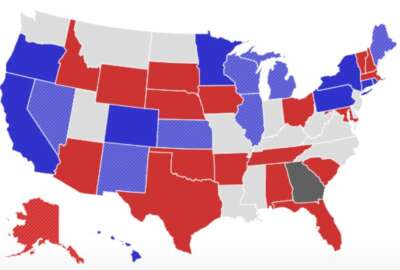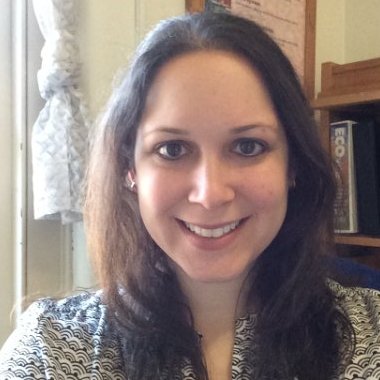

Pennsylvania's Human Services Department is working with schools, a federal grant and data analytics to identify students at risk of suicide.
According to a 2015 report by the Department of Health and Human Services, more than 3 million adolescents ages 12-17 reported at least one major depressive episode in the past year, and more than 2 million reported severe depression that impeded their daily functioning.
Of these students, 18 percent reported seriously contemplating suicide within the past year, and 9 percent reported a prior suicide attempt.
Most state statistics mirror these national rates, showing a troubling pattern that seems to be on the rise. Now Pennsylvania is using data analytics via a set of sophisticated survey and analytical tools to identify mental health issues among school children.

“Suicide is the second leading cause of death among youth in Pennsylvania,” Dr. Perri Rosen said on Ask the CIO: SLED Edition. “For the last year on record we actually lost 242 youth between the ages of 10 and 24.”
Rosen, a nationally certified psychologist and Pennsylvania-certified special education teacher, is project director of the Garrett Lee Smith Youth Suicide Prevention grant awarded by HHS to the Commonwealth of Pennsylvania’s Department of Human Services.
The Pennsylvania Youth Survey, a voluntary program, looks at a whole range of different risk and protective factors students are dealing with in schools. According to Rosen, about one in six students report seriously considering suicide in the prior 12 months while about one in 10 are actually reporting that they attempted suicide.
It important to note that the program has broader applications covering a whole range of student mental health issues.
“We’ve actually done a lot of work through this project to help schools think more broadly about their suicide prevention efforts,” Rosen said. “For example, bullying prevention, trauma informed practices, mental health education, those are all getting at the risk factors for suicide. So, even though our grant is focused on suicide prevention, we really try to help schools think about it from a broader standpoint.”
Rosen described the survey itself and the data they began to track. Primarily, the program wanted to look at suicide risk, so it asks for recent suicide ideation within the past week as well as for a history of ideation and the tool being used. The survey takes about 10 to 15 minutes to go through and uses skip logic, which is a feature that changes the next question based on the respondent’s answer to the current question. As a result, skip logic creates a custom path through the survey, Rosen said.
Significant risk factors such as depression, anxiety, trauma, eating disorders, substance abuse and other conditions are closely watched. When spotted they call for early intervention, Rosen said. Baltimore based mdLogix supplies the survey’s technology.
“It’s actually the platform that we’re using and it’s easy for us to pull that data and it’s also easy for schools because everything is web based,” Rosen said. “When students go on the screen, they log in just as they would for any other type of website, and the score report generates instantly.”
From there, school staff can pull up results and review them while the students are still present, in order to determine the next phase in the screening process. This may include follow-up actions. Rosen emphasized the fact that school administrators can pull down aggregate data, “Which the school districts have used in a variety of ways to advocate around their school mental health and expand those services for students in the schools.”
I told Rosen that, in my experience, usually it’s not the technology that’s problematic — it’s the people, particularly the change management issues surrounding the introduction of new processes and new technology. She concurred.
“There’s a lot of potential issues that could arise,” she said. “The grant does require active parent consent for any screening. And so, with active consent, the limitation that does come up is that you tend to not be able to get the majority of students and parents on board.”
However, over the years schools have changed their approach to engaging parents. Whereas in the past they just sent the consent forms home and waited for them to return, Rosen said schools have a new attitude.
“Now they are proactive, talking about this at ‘back to school night’, describing the importance of student wellness, and how the school is really committed to serving the needs of the whole child,” she said.
The staff initially had concerns as well, particularly the schools’ mental health professionals.
“The other really significant concern was from the staff and some of the attitudes,” Rosen said. “Are we equipped to screen universally for these types of issues, and are we really going to identify students that we don’t know about already?”
Then a champion appeared, so critical to the success of any IT related effort: Administrative leadership stepped up very strongly. As Rosen described it, “They said, ‘Yes, we’re doing this, and as a matter of fact, we do screen universally for a lot of other things like vision and hearing and scoliosis which affects only two to three percent of the population, when we know that mental illness and suicide affect a much higher percentage.'”
Once the actual screening began, the feedback from schools indicated that mental health professionals had really come around. Rosen said struggling students who had previously flown under the radar were being identified and could then receive help.


Another district used the data to move forward in establishing a contract for school-based therapy services for students on campus. Finally, other districts were able to significantly increase referrals to therapy service. More students were then involved in treatment which was being provided directly in the school building.
Today the screening is done universally in two school districts and through Student Assistance Program (SAP) agencies. These are teams where students are referred in schools and which include community behavioral health liaisons. As a result, 45 agencies around Pennsylvania offer screening, or 50 percent of the state’s counties and public school districts.
The results are significant.
“At the end of the day almost 8,000 students were screened through SAPs,” Rosen said. “So over 500 students are screening positive for current suicide ideation, and about a quarter, 25 percent are screening for a history of suicide ideation.”
The universal screening efforts in the two districts have now reached approximately 950 students. Rosen described the results. There were 16 students that were identified at current risk of suicide, and altogether looking at current risk and history of suicide ideation, that totaled about 150 students.
And most importantly, with universal screening, the program can identify students at risk and connect them with the support and services they desperately need.
Copyright © 2024 Federal News Network. All rights reserved. This website is not intended for users located within the European Economic Area.
